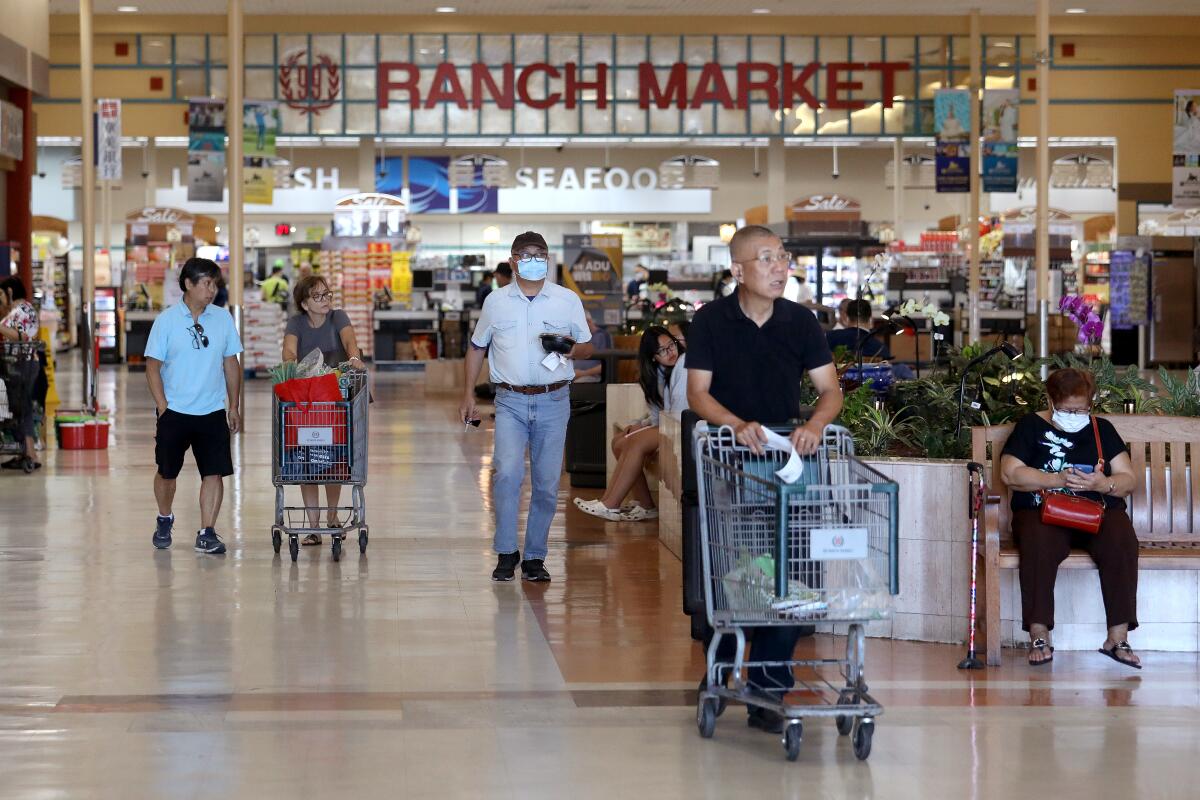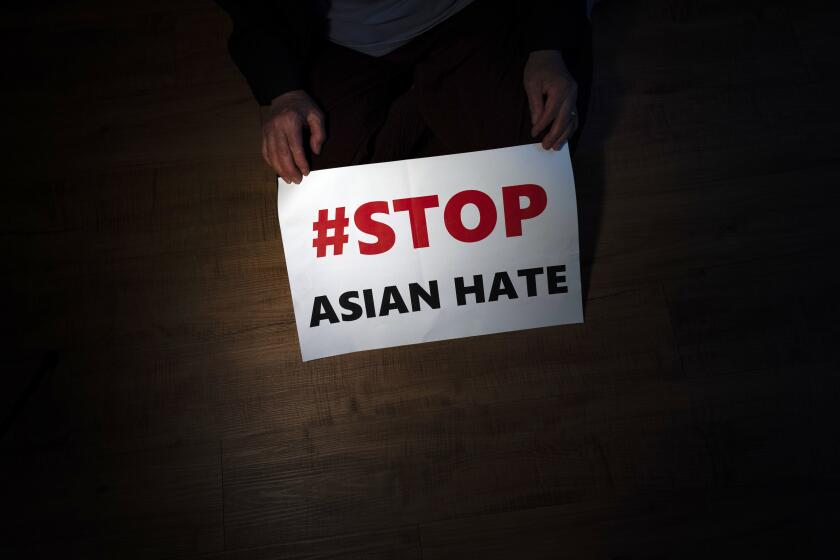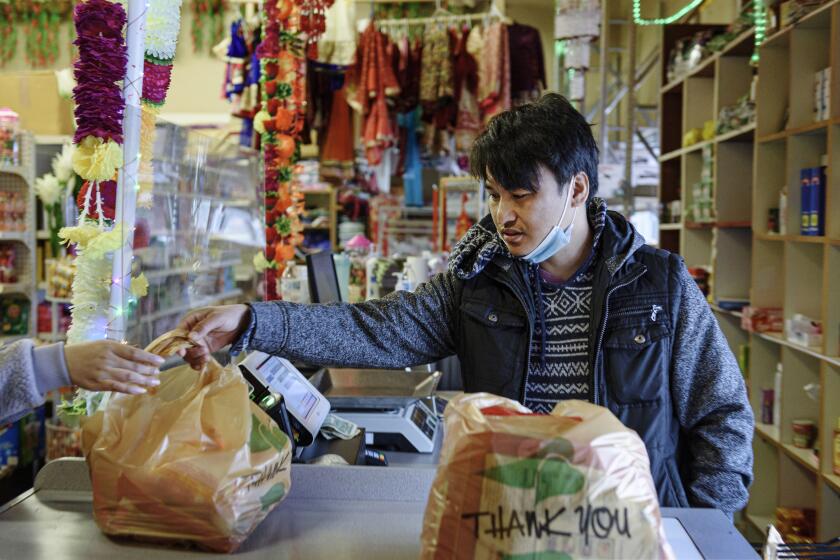Op-Ed: What Asian immigrants, seeking the American dream, found in Southern California suburbs

- Share via
For generations, suburban homeownership has symbolized American success — epitomizing the American dream, the myth of a universally achievable “good life.” Over the last four decades, L.A. has been the promised land for Asian immigrants seeking this all-American lifestyle. The east San Gabriel Valley made some of these dreams a reality. How did this happen? How did Asians change — and cleave to — American suburbia?
L.A.’s rise from western outpost to global city took off in the 1920s. Buoyed by agriculture, then the defense, entertainment and hospitality industries and later trans-Pacific trade, L.A.’s economic growth led to rapid expansion that beckoned more residents. After the 1965 Hart-Celler Act relaxed immigration restrictions, American dream seekers included people from Hong Kong, Taiwan, South Korea and the Philippines, predominantly educated professionals fulfilling labor shortages throughout California.
Many middle- and upper-middle-class Asian immigrants looked to suburbia as the best place to raise a family. During the 1980s, 1990s and 2000s, these families were lured to the valley by newer housing that provided access to reputable schools. Builders in the east valley courted Asian residents and their buying power, in contrast to urban neighborhoods and inner-ring suburbs where real estate agents imposed formal and informal restrictions mostly to exclude Black and Latino residents during the early and mid-20th century.
Nearly a third of Asian Americans in the San Gabriel Valley said they or their family members have experienced anti-Asian hate during the COVID-19 pandemic, a new survey found.
Asian homebuyers were also drawn to what developers, homebuilders and sellers called “country living” — a design aesthetic and local culture inspired by romanticized, imagined histories of old California as rural, conservative and white.
Housing brochures and newspaper ads promised that country living shielded its residents from modern urban life. The subtext: These suburbs kept you away from the vice, crime and poverty associated with cities, which were facing the challenges of deindustrialization, cycles of white flight and gentrification as well as government disinvestment in the social safety net since the Cold War. While white families understood that country living was designed for them, many foreign-born Asian people also gravitated to this landscape. Homeownership in a desirable suburb afforded immigrants bragging rights as people who “made it” in America, seemingly granting a path to assimilation.
As Asian families built thriving communities in Diamond Bar, Walnut, Rowland Heights and Hacienda Heights, they had to balance maintaining their heritage with adapting to mainstream American and suburban norms. Many Asian residents thus performed the rituals expected of model suburbanites: They tended to family life, prayed and shopped.
On the whole, immigrants in these communities largely attempted to fit in. When they tried to establish even conservative or basic institutions reflecting their culture, the pushback — from white residents, but also from pro-assimilation Asian people — demonstrated the stubbornness of Southern California’s suburban ideals.
Walnut especially illustrates how cultural pressures to assimilate originated both outside and within the Asian American community. Between 1980 and 1990, as Walnut’s white population fell from 75% to 48% of its total, its Asian population rose from 10% to 35%. The latter group sought modest changes. Take, for instance, St. Lorenzo Ruiz Catholic Church.
North Dakota has outpaced every other in growing its Asian American communities, even as California keeps its lead as the state with the largest Asian American population.
In 1992, church leaders and an architect approached Walnut’s planning commission and city council with blueprints to build a freestanding parish with a growing Filipino congregation. Walnut officials claimed St. Lorenzo’s design clashed with the suburb’s rural aesthetic, calling it “too ultramodern.” Others chided the height of the proposed cross claiming it suggested Catholicism reigned over Protestantism. Witnesses of these debates, including St. Lorenzo’s Filipino congregation, realized the criticism was less about the building plan and more about opponents’ fears that the church would mark Walnut as an Asian community.
The anti-Asian sentiment here was mostly covert, though some white critics specifically argued that the church stymied Filipinos’ abilities to assimilate because it was named after the first Filipino saint. But the message was clear: St. Lorenzo’s sizable Filipino congregation made an otherwise typical suburban space — a Christian church — transgressive and inappropriate for country living. It took years of disputes (and fatigue between parties) before the parish opened in 1995.
But white residents’ criticisms and fears of how Asian people occupied suburbia were echoed by affluent Asian residents too. In the mid-1990s, the Taiwanese grocery chain 99 Ranch Market — which launched in Southern California — wanted to open a Walnut location. City leaders assumed Chinese homeowners would welcome the plan. The opposite occurred. Joining white naysayers, Chinese suburbanites protested the grocery chain, citing concerns over traffic and safety. In other words, critics stereotypically equated Asian retail hubs with density and disorder. They also considered Chinese stores déclassé — a threat to property values and to the image of suburbia.
While many immigrants believed a local 99 Ranch would be convenient, they feared Walnut would become “the next Monterey Park” — in their eyes a cautionary tale of a bedroom community turned suburban Chinatown. A loose alliance of white and Asian homeowners ensured 99 Ranch never came to Walnut. These Asian suburbanites’ fight to preserve country living’s Anglocentric milieu bolstered their claims of assimilation.
The east San Gabriel Valley of today is radically different from 40 years ago. Suburbs with modest Asian populations in the 1980s had Asian majorities by the new century. Asian grocery stores, boba shops and other businesses eventually established a presence in these communities.
Yet while the demographics have transformed, other characteristics of country living suburbia have barely changed — from its largely right-leaning voter base to the bustling strip malls still ironically upholding the region’s “rural” character. Many east valley residents across racial lines, like suburbanites across America, continue to promote static ideas of how a suburb should look and feel.
All of this is a reminder that changing racial demographics can’t tell you exactly how a place will or won’t evolve. It depends on how willing and able new residents are to challenge that place’s long-held myths.
James Zarsadiaz is an associate professor of history at the University of San Francisco and author of the forthcoming book “Resisting Change in Suburbia: Asian Immigrants and Frontier Nostalgia in L.A.”
More to Read
A cure for the common opinion
Get thought-provoking perspectives with our weekly newsletter.
You may occasionally receive promotional content from the Los Angeles Times.











